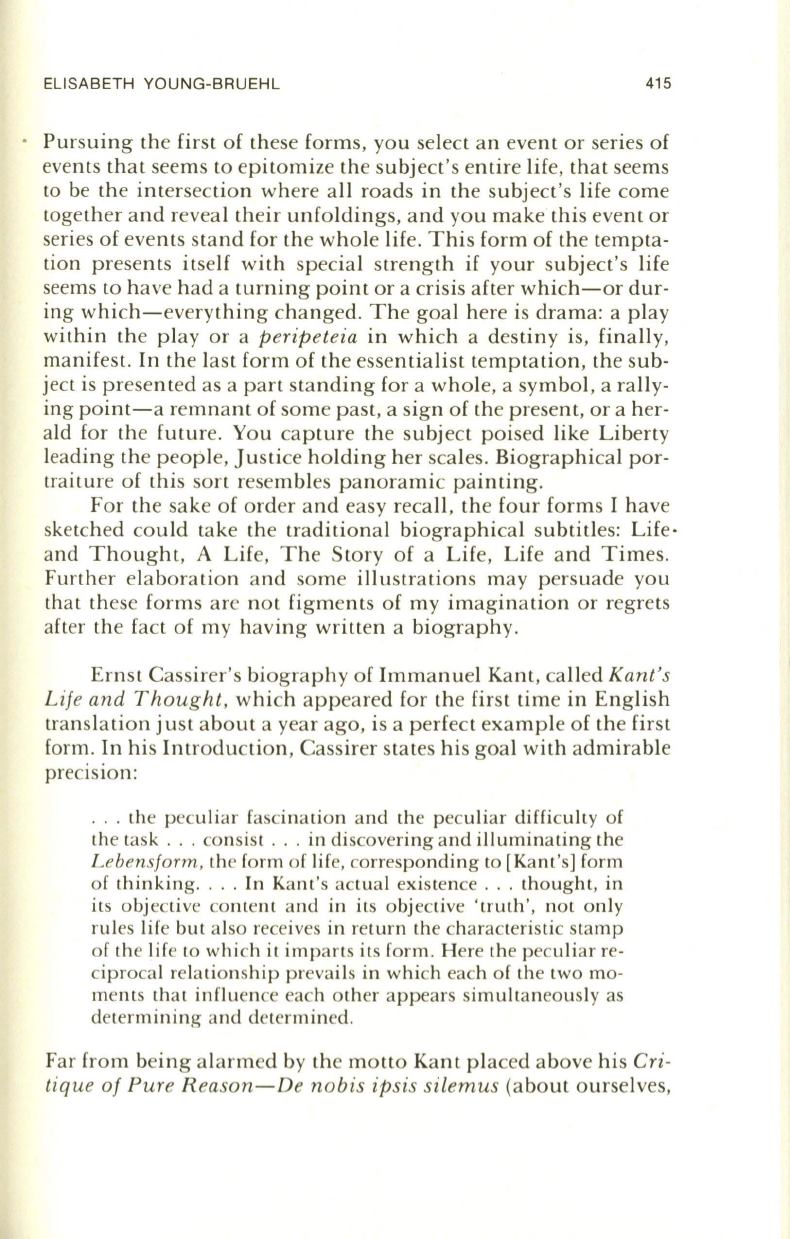
ELISABETH YOUNG-BRUEHL
415
- Pursuing the first of these forms, you select an event or series of
events that seems to epitomize the subject's entire life, that seems
to be the intersection where all roads in the subject's life come
together and reveal their unfoldings, and you make this event or
series of events stand for the whole life. This form of the tempta–
tion presents itself with special strength if your subject's life
seems to have had a turning point or a crisis after which-or dur–
ing which-everything changed. The goal here is drama: a play
within the play or a
peripeteia
in which a destiny is, finally,
manifest. In the last form of the essentialist temptation, the sub–
ject is presented as a part standing for a whole, a symbol, a rally–
ing point-a remnant of some past, a sign of the present, or a her–
ald for the future. You capture the subject poised like Liberty
leading the people, Justice holding her scales. Biographical por–
traiture of this sort resembles panoramic painting.
For the sake of order and easy recall, the four forms I have
sketched could take the traditional biographical subtitles: Life–
and Thought, A Life, The Story of a Life, Life and Times.
Further elaboration and some illustrations may persuade you
that these forms are not figments of my imagination or regrets
after the fact of my having written a biography.
Ernst Cassirer's biography of Immanuel Kant, called
Kant's
Life and Thought,
which appeared for the first time in English
translation just about a year ago, is a perfect example of the first
form. In his Introduction , Cassirer states his goal with admirable
preCISIOn:
. . . the peculiar fascination and the peculiar difficulty of
the task ... consist ... in discovering and illuminating the
L ebensjorm,
the form of life, corresponding to [Kant's] form
of thinking.... In Kant's actual existence ... thought, in
its objective content and in its objective 'truth', not only
rules life but also recei ves in return the characteristic stamp
of the life
to
which it imparts its form. Here the peculiar re–
ciprocal relationship prevails in which each of the two mo–
ments that influence each other appears simultaneously as
determining a nd determined.
Far from being alarmed by the motto Kant placed above his
Cri–
tique of Pure Reason-De nobis ipsis silemus
(about ourselves,


